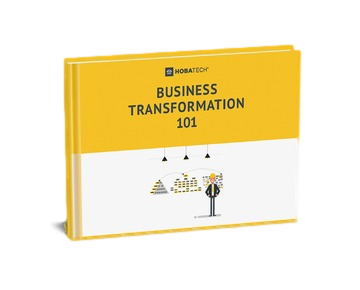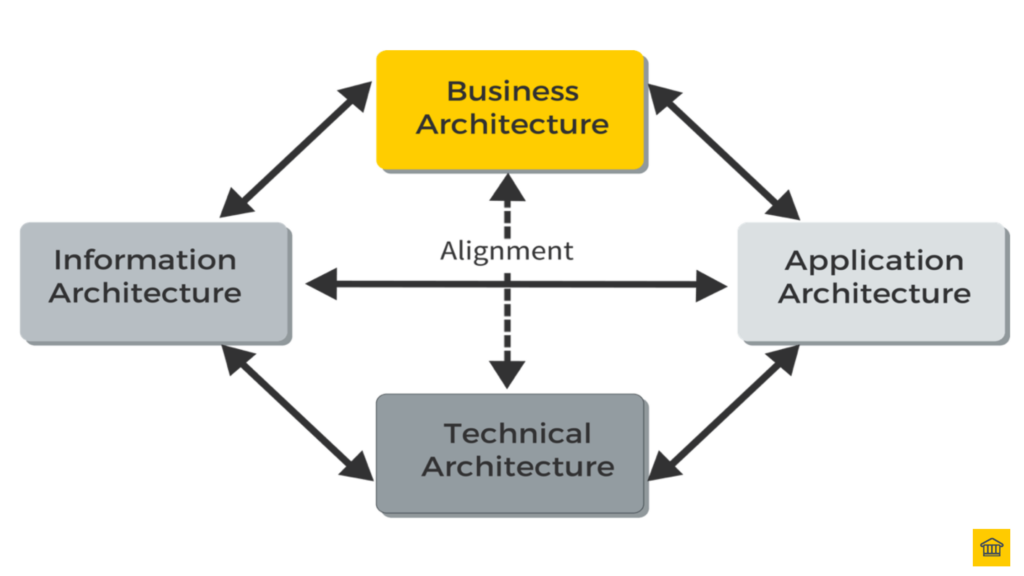Welcome to our blog post, ‘Will the Real Business Architect Please Stand Up’.
In this post, we delve into the crucial role of a Business Architect in transforming a business, from the early planning phases to overseeing its physical implementation.
We explore how Business Architects use a technical lens to address business concerns and understand that not all problems can be solved by a technology solution.
We also differentiate between Business Architects and Business Analysts, highlighting the unique roles they play within an organisation.
Furthermore, we discuss the journey of transitioning from a Business Analyst to a Business Architect, emphasising the importance of gaining a fair amount of theory across multiple frameworks, with TOGAF being a widely recognised standard.
Finally, we provide insights into what it takes to become a successful Business Architect, focusing on the importance of exceptional liaison abilities and mastering the concepts of TOGAF.
Here is a brief overview of what you can expect in this blog post:
What’s the job of a real business architect?
In this post, we’ll find out….
What’s The Role Of A Business Architect?
A Business Architect…
….develops the design of the Target Operating Model (TOM), as well as oversee the implementation of the physical TOM that is aligned to the design.
The ideal TOM is aligned with following architectures across the organisation:
The best time to engage the Business Architect is during the early stages of the programme.
They must be present from the early planning phase to validate the direction of the organisation (i.e.vision, business strategy, TOM design etc…) and oversee its physical implementation.
A Business Architect Isn’t?
Some Business Architects call themselves Enterprise-Business-Architects.
This raises the question…
“Are they responsible for both the Enterprise Architecture (technical aspect) and the Business Architecture (business aspect)?”
Let’s clarify a few misconceptions…
An ‘Enterprise-Business-Architect’ who is only responsible for the tech aspect of the business is not a real Business Architect.

6-Steps to Business Transformation Success
WHAT THE TOP 30% OF ORGANISATIONS KNOW THAT YOU DON’T 👉

👏 An ‘Enterprise-Business-Architect’ who is only responsible for the tech aspect of the business is not a real Business Architect " 😳🤫 #BusinessArchitect #BusinessTransformation
Heath Gascoigne Tweet
Instead, they are a Technology Architect.
They are only responsible for the Technology Architecture in the enterprise or organisation.
Differentiating the Business Architect from a Business Analyst
Another misconception is that the Business Architect is a Business Analyst.
While these two professions are involved in designing and implementing the TOM, there’s a few differences (select the link to skip to the section below):
Let’s discuss these differences one by one:
They have a different focus
They have a different focus
As we’ve discussed earlier, Business Architects focus on the planning, strategy, implementation and overall life cycle of the program.
In contrast, Business Analysts are involved in the later phase of the project life cycle. Once a strategy is made by the Business Architect, the Business Analysts helps develop and implement the solution.
They operate at a different organisation level
They operate at a different organisation level
Business Architects operate at a higher organisational or strategic level. They look at ‘what is possible?’, and ‘why?’
Meanwhile, Business Analysts work at the lower levels. They look at the project level and define how these requirements will be implemented.
There’s a clear delineation between Business Architects and Business Analysis.
Here’s an illustration that shows where the overlaps and differences occur:
The overlaps occur when the Business Architect hands some work to the Business Analyst to translate high level strategic requirements into lower level detailed requirements.
They are engaged at different times (or phases) within the Programme
The Business Architect is brought into the early stage of the Business or Programme lifecycle to lead the design.
In contrast, the Business Analyst is brought later, as part of the design’s implementation.
They have similar tools, but use them differently
The Business Architect and Business Analyst share some common tools, but use them differently.
It’s kind of like how a weight-lifter and a bodybuilder use weights, which lead to different outcomes.
One example is impact and gap analyses.
The Business Architect conducts a gap analysis on existing business capabilities and assess their ability to meet future objectives.
In contrast, Business Analysts will use gap analysis to assess the differences and changes required between an existing (current) process, and the proposed (future).
In short, they might use the same tools.
…but you have two distinct results.
The ‘scale’ of change they deal with is different
Business Architects deal with bigger scale and larger tasks.
Let’s use renovating a house as an analogy.
If you are a homeowner renovating the bathroom, you have two options – you can do it yourself or bring in an expert.
Since it’s a relatively small job, you could manage it yourself but you do need to bring in a specialist for specific tasks (i.e.a plumber, electrician or carpenter).
If you’re renovating the whole house, you need to bring in an expert.
You need someone who understands how one change in a room can impact the whole house.
You also need to remove a few walls and open up the living space.
You need someone to come up with the design and manage the implementation of that design.
That specialist is the Architect, and in the case of an organisation or business, that specialist is the Business Architect.
Looking for the Best Training to deliver your Business Transformation? Search no more!
- 30-Day Money Back Guarantee
- Risk FREE

👏 "Business Architects are often get mistaken for Business Analysts, this is due to similar tools and techniques they use, but the level of the organisation they look at and scale of change is considerably different" 😳🤫 #BusinessArchitect #BusinessTransformation
Heath Gascoigne Tweet
Business Architecture is not Business Change
The Business Architect is not a Business Change person.
Business change does not compile detailed impact analyses or plans – nor do they lead the implementation of the final solution.
The point where Business Architecture and Business Change cross over is during the delivery phase.
Here, the Business Architect works with the Business Change to oversee that the physical implementation and alignment of the design.
The role of the Business Architect here is to highlight these ‘Business Changes’ in terms of the people, process and technology.
In addition, managers in charge of change detail the following:
- what the change means on a day-to-day operational level
- how the business will transition from existing to new processes, systems etc...
This is not the role of the Business Architect.
However, what happens is the Business Architect is drawn into Business Change conversations.
They confirm and assure the Business Change activities which will lead to the implementation of the design of the TOM.
But this is where the confusion sets in.
The Business Architect is inadvertently tasked with coming up with business change plans and activities because of their familiarity with the design and the subject matter.
However, business Change and Business Architecture are specialized skill sets.
They have their own frameworks, tools and techniques.

👏"The Business Architect is not a Business Change person. The point where Business Architecture and Business Change cross over is during the delivery phase. The role of the Business Architect here is to highlight these ‘Business Changes’ in terms of the people, process and technology " 🔒🚀 #BusinessChange #BusinessArchitect #BusinessTransformation
John Doe Tweet
What Is The Cause For Confusion?
Historically, Business Architects come from a technology background.
They work as either an Application, Solution, Information or Data Architect, IT Project lead or developer.
That’s because there’s always been a historical emphasis on the technology side of Enterprise Architecture in the Zachman Framework in 1987, and later with TOGAF.
Thus, the foundations of any architectures was based on IT Strategy.
The problem with Business Architects that have a technology background is…
- they look at business issues through a technology lens
- they think that technology alone will solve business problems
So, when they perform ‘Business Architecture’ activities they use a ‘technical’ lens.
They believe all business concerns, problems and issues can be addressed and solved by a technology solution.
In reality, it’s not always the case.
It doesn’t always work.
That said, you should understand the role of a real Business Architect.
This way, you can successfully transform your business, first time, on time!
Conclusion
In conclusion, the role of a Business Architect is pivotal in shaping the direction of an organisation.
They are involved from the early planning phases, validating the organisation’s vision and strategy, and overseeing its physical implementation.
They use a technical lens to address business concerns, understanding that not all problems can be solved by a technology solution.
The distinction between Business Architects and Business Analysts is crucial. While Business Analysts focus on designing organisational processes and measuring their performance, Business Architects devise end-to-end models and strategies. Transitioning from a Business Analyst to a Business Architect involves gaining a fair amount of theory across multiple frameworks, with HOBA becoming a widely recognised standard.
Becoming a successful Business Architect (which we call Business Transformators, because we have moved beyond just design and include strategy, collaboration and negotiation), requires exceptional liaison abilities to convey the information needs of the business to the IT team, understanding data constraints, and mastering the terminology, structure, and concepts of HOBA for Business Architecture and Business Transformation and TOGAF for Technology Architecture.
We hope this blog post has provided you with a deeper understanding of the role and importance of Business Architects.
If you’re interested in learning more about this topic or how HOBA Tech can assist your organisation in its business architecture journey, please contact us. We would be delighted to discuss how we can help.
Thank you for reading this, hope you found great value in it!
Sincerely,

Heath Gascoigne
P.S. Remember: A real Business Architect must be present from the early planning phases to validate the direction of the organisation (i.e.vision, business strategy, TOM design etc…) and oversee its physical implementation.
P.P.S. If you want to learn more about business transformation, or what a real Business Architect does on a day-to-day basis in transforming businesses, check out The Business Transformation Playbook here.
For more information, visit https://hoba.tech














